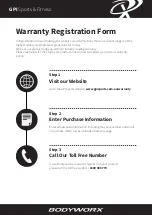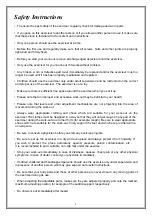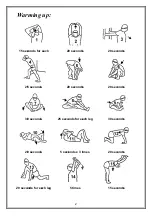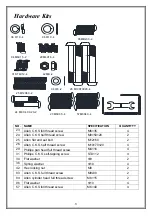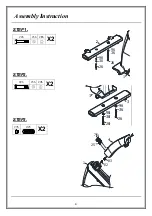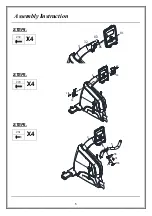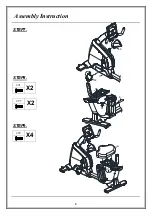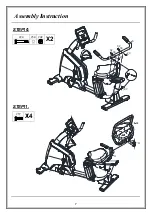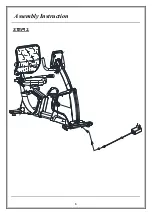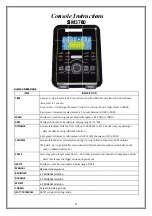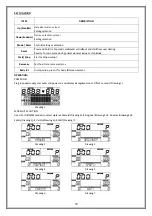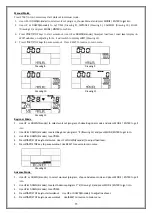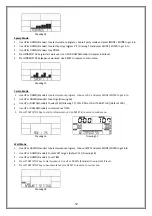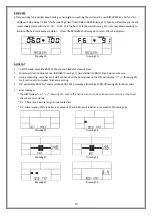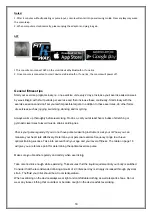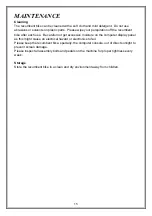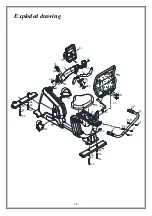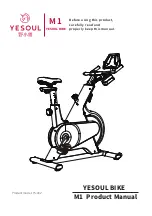
1
Safety Instructions
• To ensure the best safety of the exerciser, regularly check
for damage
and worn parts.
• If you pass on this exerciser to another person or if you allow another person to use it, make sure
that that person is familiar with the content and instructions.
• Only one person should use the exerciser at a time.
• Before the first use and regularly make sure that all screws, bolts and other joints are properly
tightened and firmly fixed.
• Before you start your work-out, remove all sharp-edged objects around the exerciser.
• Only use the exerciser for your work-out if it works without problem.
• Any broken, worn or defective part must immediately be replaced and/or the exerciser must no
longer be used until it has been properly maintained and repaired.
• Children should use the exerciser only under adult supervision and be instructed on the correct
and proper use of the exerciser. The exerciser is not a toy.
• Make sure there is sufficient free space around the exerciser when you set it up.
• Please note that an improper and excessive work-out may be harmful to your health.
• Please note that levers and other adjustment mechanisms are not projecting into the area of
movement during the work-out.
• Always wear appropriate clothing and shoes which are suitable for your work-out on the
exerciser.The clothes must be designed in a way so that they will not get caught in any part of the
exerciser during the work-out due to their form (for example, length). Be sure to wear appropriate
shoes which are suitable for the work-out, firmly support the feet and which are provided with a
non-slip sole.
• Be sure to consult a physician before you start any exercise program.
• Be sure to set up the exerciser in a dry and even place and
always protect it from humidity. If
you
wish
to protect the place particularly against pressure points,
contamination,
etc.,
it
is re
commended to put a suitable, non-slip mat under the exercise
.
• Stop your work-out immediately in case of dizziness, nausea, chest pain or any other physical
symptoms. In case of doubt, consult your physician immediately.
• Children, disabled and handicapped persons should use the exercise only under supervision and
in presence of another person who may give support and useful instructions.
• Be sure that your body parts and those of other persons are never close to any moving parts of
the exerciser during its use.
• When adjusting the adjustable parts, make sure they are adjusted properly and note the marked,
maximum adjusting position, for example of the saddle support, respectively.
• Do not work out immediately after meals!


